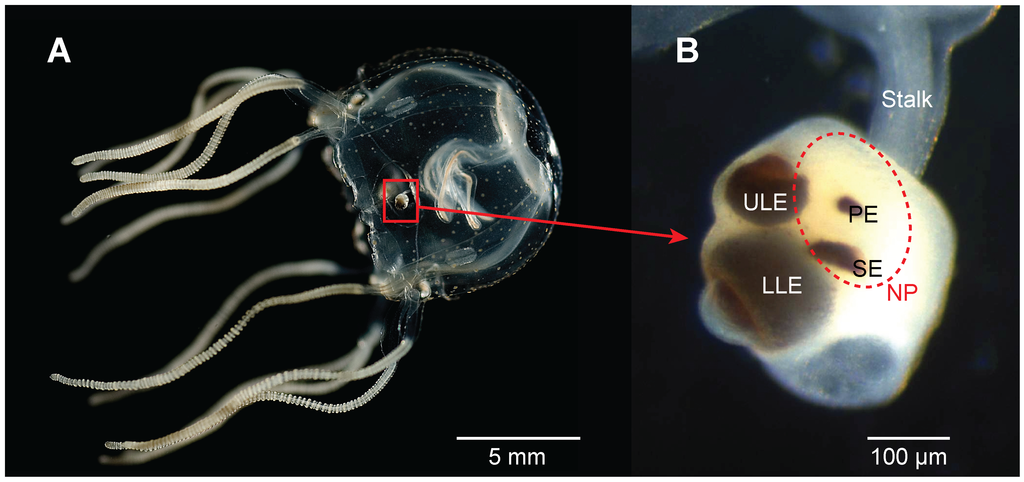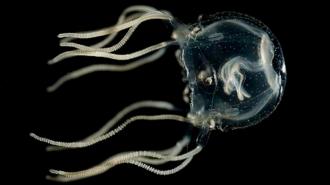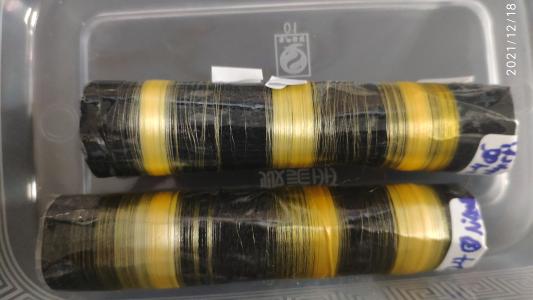Could a jellyfish tell you why the ocean is near the shore, or think of things never thunk before — if it only had a brain? Maybe, but jellyfish don’t have brains. They instead have simple nervous systems dispersed throughout their transparent bodies. For this reason, it has been long thought that they are incapable of learning beyond a basic level, and research seems to back up this notion.
In 2021, biologist Ken Cheng wrote a systematic review of learning in cnidarians — the phylum that consists of jellyfish, hydras, and sea anemones. He found substantial evidence of habituation among these animals, meaning they can grow accustomed to a stimulus. In other words, super basic learning.
Only a few studies showed the potential for associative learning in sea anemones. In these, the anemones were shocked while also being shown a light. In time, the animals would retract their bodies when the light was shown, even without a concurrent shock. It’s classic conditioning and does suggest that the anemones formed a memory and adapted their behavior accordingly.
But there’s a concern. Because anemones rarely encounter shock-happy scientists in the wild, it’s not entirely clear whether these studies demonstrated learning that aids survival or simply induced an unnatural behavior in the creatures.
To see if and how cnidarians learn, researchers at the University of Kiel and the University of Copenhagen created a more natural school for Caribbean box jellyfish. Their results challenge the belief that advanced learning requires a brain.
A school for jellyfish
For brainless, spineless, blueberry-sized predators, Caribbean box jellyfish have it pretty good. They spend their days swimming in sunlit tropical waters among the prop roots of mangrove trees. These roots provide protection as the jellies hunt their prey of choice, tiny crustaceans called copepods.
It all sounds idyllic, but as always in nature, dangers abound. One such danger is the roots themselves. Should a box jellyfish’s fraile body collide with a root, it could injure the creature. The weather also poses risks. It can churn up silt and other particles to make the water murky, inhibiting a box jelly’s ability to see the prop roots and navigate them safely. (Caribbean box jellyfish are unique among jellies for having eyes on their bells. Most other jellyfish can only sense light and dark.)
It’s best to leverage its natural behaviors, something that makes sense to the animal, so it reaches its full potential.
Jan Bielecki
The researchers wanted to determine if box jellyfish learn to avoid the prop roots or have to mindlessly take their licks. To test this, they brought the jellies into the lab and created three experimental conditions using round tanks.
The first tank sported high-contrasting black-and-white stripes. This condition was meant to simulate clear-water days where the prop roots are easily visible. The second tank also contained stripes but with low-contrast colors to simulate murky days. The final tank had uniformly gray walls.
The researcher’s aim was to create conditions analogous to those the box jellyfish actually encounter in the wild — and not the cnidarian equivalent of a close encounter with the third kind.
“Learning is the pinnacle of performance for nervous systems,” Jan Bielecki, the study’s first author and a postdoctoral researcher at Kiel University, said. “It’s best to leverage its natural behaviors, something that makes sense to the animal, so it reaches its full potential.”
Learning is a no-brainer
Turns out, these “brainless” creatures are quick studies. In the low-contrast bucket, the jellies initially collided with the wall, but in less than 8 minutes, they began swimming an average of 50% farther away. They also quadrupled their number of quick turn maneuvers to avoid collisions.
In the high-contrast bucket, the jellyfish managed to avoid the walls altogether by sticking to the center. Conversely, in the gray bucket, they continuously bonked their bells. Taken together, these results suggest that the box jellyfish began associating the murky stripes with collisions and adjusted their behavior accordingly.
In short, they learned.
“We can see that as each new day of hunting begins, box jellyfish learn from the current contrasts by combining visual impressions and sensations during evasive maneuvers that fail,” Anders Garam, one of the study’s lead authors and an associate professor of marine biology at the University of Copenhagen, told Genetic Engineering & Biotechnology News.
He added: “So, despite having a mere one thousand nerve cells [per eye-bearing structure] — our brains have roughly 100 billion — they can connect temporal convergences of various impressions and learn a connection — or what we call associative learning.”
Specifically, this is a type of associative learning known as operant conditioning. This advanced learning occurs when an organism learns to associate a voluntary behavior with a stimulus or result. The classic example is the lab mouse taught to push a blue button for a treat and avoid the red button that gives it a zap.
As the researchers note in their study: “[This] suggests the intriguing possibility that advanced neuronal processes, like operant conditioning, are a fundamental property of all nervous systems.” And not just those based on a centralized brain.

In the 24 eyes of the beholder
To tease out how the box jellyfish learn without a brain, the researchers tested the creature’s rhopalia — sensory structures located on a box jellyfish’s bell. An adult box jelly will have four such structures, each one housing six eyes. These structures also generate “pacemaker signals” that control the jelly’s pulsing movement and spike in frequency when avoiding obstacles.
The researchers positioned isolated rhopalium in a Petri dish to face a screen. The screen projected images showing moving bars of different contrasts — similar to the tank experiment. During the pre-trial runs, the rhopalium did not respond to the gray or light gray bars, seemingly because it interpreted them as distant. It did, however, generate pacemaker signals for the dark gray bars.
During the trials, the researchers trained the rhopalium by giving it a small electric shock when any colored bar appeared on the screen. Within five minutes of testing, the rhopalium began generating pacemaker signals in response to the gray bars and even the light gray ones.
These results suggest that the rhopalial nervous system is the learning center of the Caribbean box jellyfish and that the species combines visual and mechanical stimuli to learn.
“Our behavioral experiments demonstrate that three to five failed evasive maneuvers are enough to change the jellyfish’s behavior so that they no longer hit the roots. It is interesting that this is roughly the same repetition rate that a fruit fly or mouse needs to learn,” Garm said.
The researchers published their results in the peer-reviewed journal Current Biology.
The findings have implications for our understanding of the evolution of learning, too.
Relearning our understanding of learning
In future research, the team hopes to identify which cells precisely control the box jellyfish’s ability to learn, and how those cells translate that information into behavior. There is also the question of how the jellyfish form memories and how long they retain them.
The research also opens the question of whether more natural studies will demonstrate similar results among other cnidarians.
“This is only the third time that associative learning has been convincingly demonstrated in cnidarians,” Cheng, who was not involved with the study, told The New York Times. “And this is the coolest demonstration, replete with physiological data.”
The findings have implications for our understanding of the evolution of learning, too. They suggest that associative learning may be a property of all nervous systems, not just those centralized around a brain. That has the potential to shake up how much and how far back learning may have shaped our shared evolutionary history.






